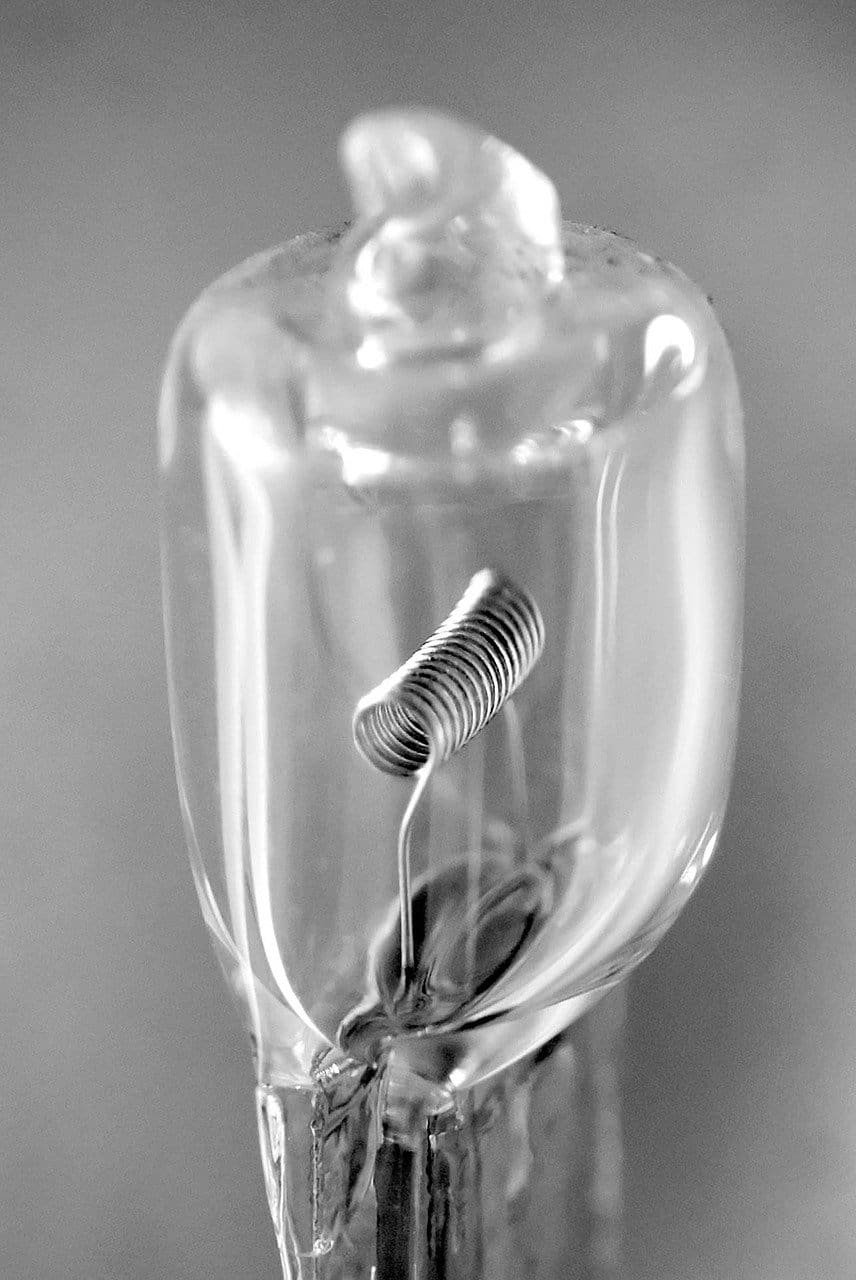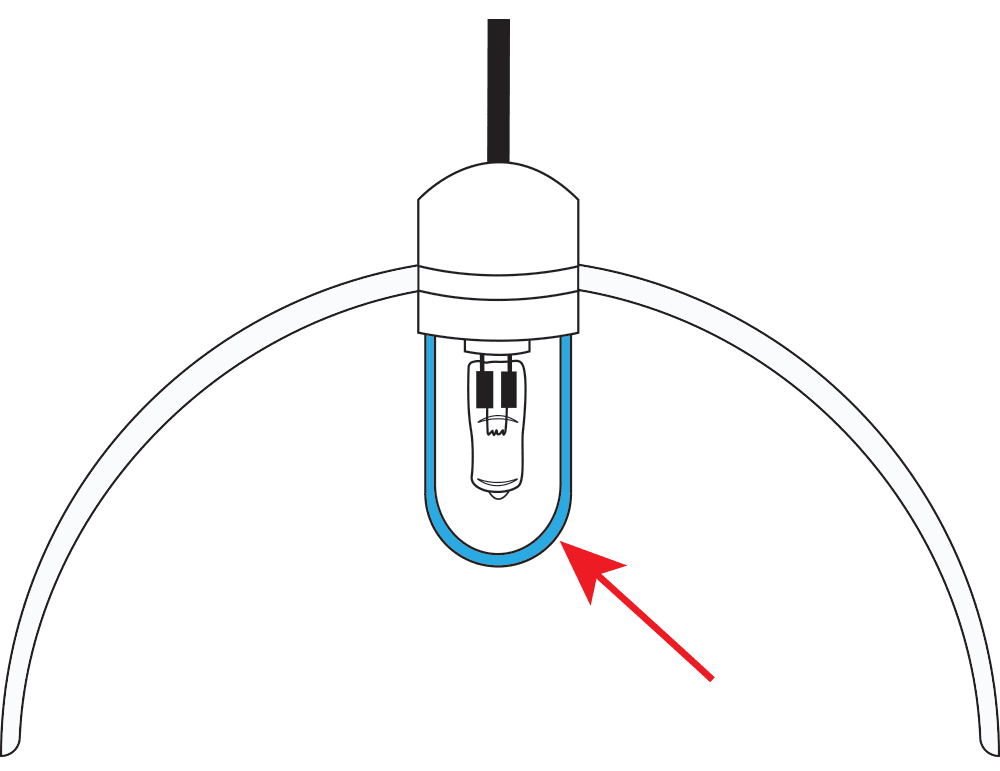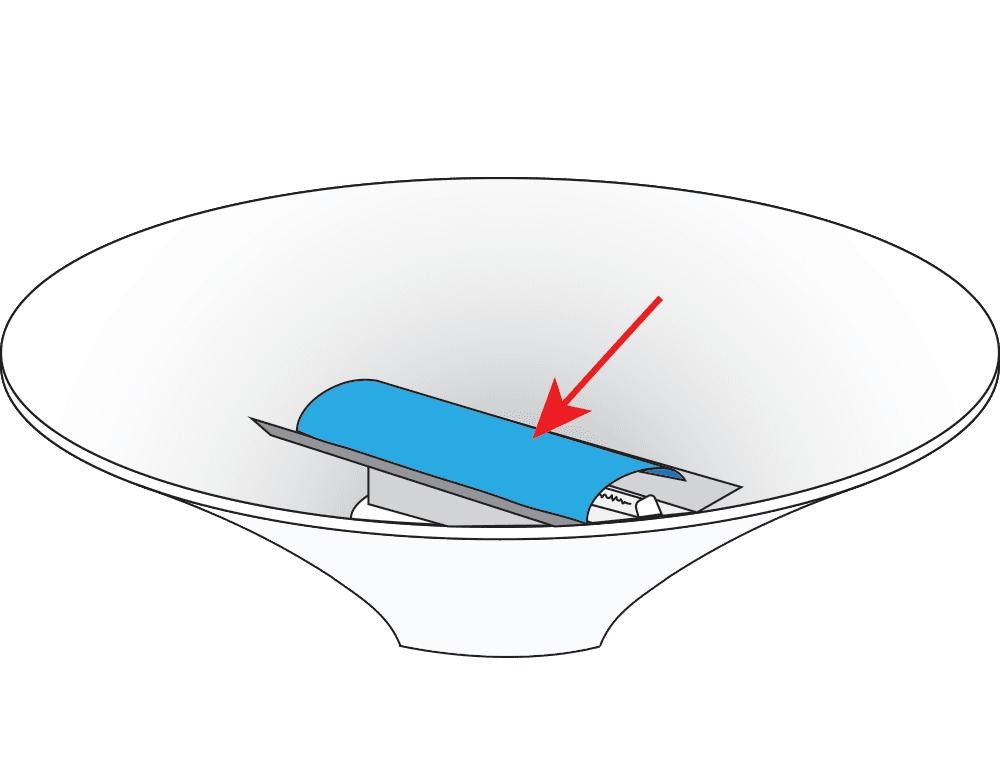
The Old Problem:
Halogen lighting is hot, like 4,500°F white hot. By its very nature you’re heating up a coil of tungsten wire in a vacuum, or under pressure with an inert gas to create the maximum lumen output that the filament can produce – without destroying itself in the process. The glass bulb housing this filament is put under stress and has an extraordinarily high level of potential energy stored within. There is an inherent risk of these bulbs exploding once the glass becomes compromised by rapid changes such as a temperature shock from getting wet when hot, being struck, or more likely gradual heat stress over time.
The Old Solution:
In order to keep users safe from potentially scorching glass shrapnel, many legacy fixtures (as well as some new ones) surround the bulb with a glass shield. This bulb shield keeps the bulb(s) safely housed behind a thick glass wall that will catch any potential explosion that might occur during the life of the bulb.
The New Problem:
While bulb shields successfully do their job for halogen lighting, they are however detrimental to the health of newer-generation bulbs such as Light Emitting Diodes (LED)s. LED bulbs rely on an entirely different method of producing light with advanced circuitry and semiconductors. These bulbs don’t need the added protection that bulb shield provides, and in fact the bulb shields have a negative effect on LED bulb health by trapping in heat, overheating the components, and shortening their life. Read more about the effects of overheating here.
The New Solution:
How can this be corrected? Simple… if your fixture is older, there is a good chance it might contain this bulb shield, simply remove it. New fixtures are less likely to have them, but if they do, and you intend to use LED lighting, these shields should be removed.
**NOTE: The LED BULB itself should be left alone, do not try to remove the outside lens of the bulb. The “bulb shield” is a heavy glass component of the light fixture itself.


In Summary:
If you’re using LED bulbs, and your light fixture has a bulb shield, remove it.
If you’re using halogen bulbs and your light fixture has a bulb shield, keep it installed.
Whatever your application, should you have any questions on how to care for your EmeryAllen bulb, do not hesitate to reach out at info@emeryallen.com.

